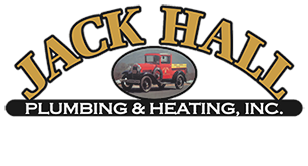When the first cold snap of the year makes you realize that fall is in the air, it’s time to switch the furnace on. It’s also time to think ahead to spring if you want your HVAC system to switch seamlessly to cooling your home when the weather warms up. That means taking some simple steps to winterize your outdoor unit.
Clean the Outdoor Unit
Fall creates a lot of debris, such as leaves, grass clippings, twigs, and more that blows around and often finds its way into the HVAC condenser unit. It’s important to carefully clean the condenser fins, vents, and metal housing using a soft brush and a low-pressure hose to keep it running smoothly.
It’s also key to make sure the space around it is free of obstructions so air can circulate. A clean condenser discourages critters from nesting under the leaves and helps prevent mold, fungus, and slime from forming on the leaf litter that collects inside AC units.
Look for Signs of Damage
Because the outdoor unit is exposed to the elements, it’s eventually going to show some wear and tear. However, any cracks or other damage that might seem minimal can grow and create issues down the road. If you see cracks or rust on the casing, leaks, or faulty seals contact us at Jack Hall Plumbing & Heating to schedule an appointment. Our experienced technicians can diagnose and fix any issues before they become major problems. Also, take a second to inspect the concrete pad to see if the condenser is level. Over time, especially in soft soil, these pads can shift creating instability in the unit.
Insulate Exposed Pipes & Lines
Summer heat and winter cold take a toll on the foam or rubber pipe covers on condenser refrigerant lines and tubing. Checking to make sure the insulation covering these pipes is in good shape is important because if it’s split or pieces are missing the pipes can freeze and burst. As a rule of thumb, any lines that run from the outside condenser to the inside unit need to be well insulated to prevent problems in the spring.
Should You Cover Your Condenser Unit?
Outdoor HVAC units are built to withstand the elements so covering them in winter isn’t required. But if your condenser is in a spot where it might be susceptible to falling ice from the roof or limbs and twigs from nearby trees you can put a piece of plywood on top of the unit to protect it (don’t forget to weigh it down).
For people who prefer using a cover, use breathable materials such as vinyl and nylon. Cheap plastic covers create condensation and any moisture from winter weather that gets trapped in the unit will promote rust. You can purchase a cover specifically designed to protect HVAC units and there are products that only cover the top of the unit. These are a better option because they don’t completely enclose the condenser, which provides shelter for pests that can damage components.
Maintain Your HVAC System for Every Season
At Jack Hall Plumbing & Heating, our experienced technicians can check every part of your HVAC system to make sure it keeps you and your family warm through the winter and will be ready to cool your home in the spring. Take advantage of our HVAC Service Protection Plans that cover regular inspections and offer priority service. Contact us today to schedule a maintenance appointment, and our team will keep your HVAC running smoothly year-round.


